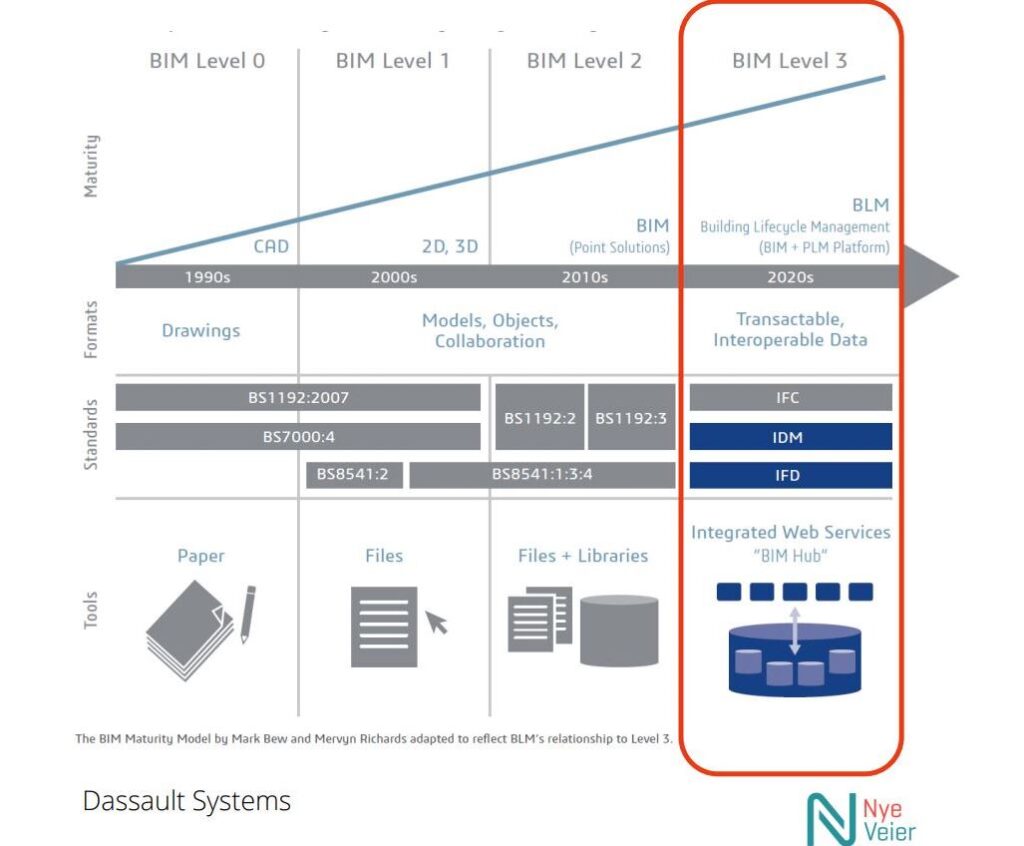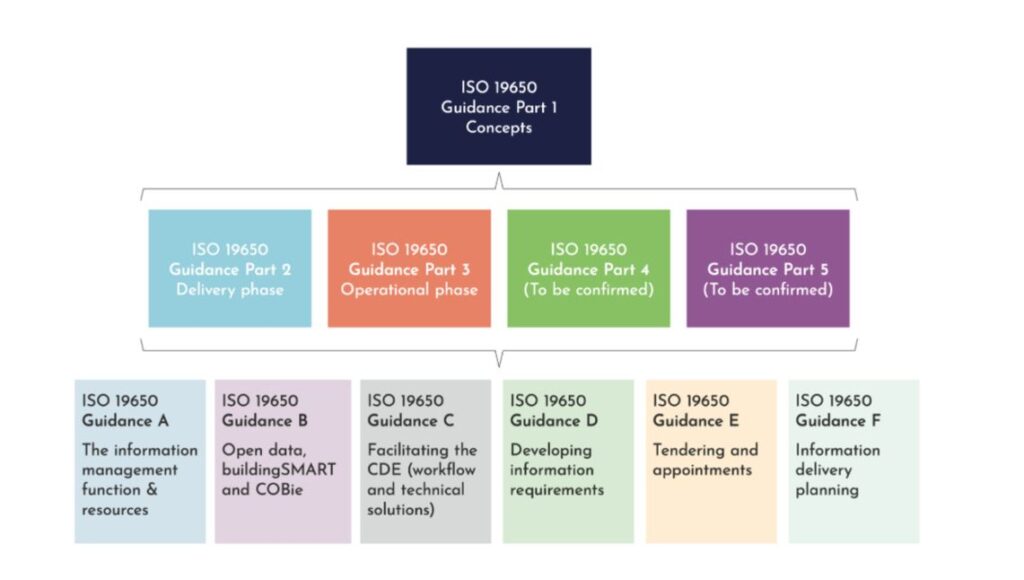
Building information modeling (BIM) is described in the construction industry as the process of creating and managing data during design, construction, and operation of a building. There has been an exponential increase in the use of BIM in recent years as it has become increasingly prevalent throughout Europe. A benchmark was conducted for the use of BIM in European countries and the results are presented in this article.
Authors: Lumiere Mwila, Jarno Rautiainen & Timo Lehtoviita
Introduction
Due to its requirements for effective communication and collaboration, BIM is becoming increasingly important in the construction industry. Construction professionals have recently embraced international standards and approaches to implementing BIM, which has increased popularity and understanding.
Data was gathered from a collection of thesis based on which a benchmark report (Mwila et al. 2022) was compiled by LAB University of Applied Sciences within BIM-integration of higher and continuing education, BIM-ICE-project. The project is co-funded by the European Union.
This article investigates the maturity level of BIM in the following countries: Norway, the United Kingdom, Switzerland, the Netherlands, and Germany. This research aims to identify gaps in Finnish BIM culture and suggest ways to fill them. To assess the level of BIM use in the selected European Countries, Double-degree students wrote their thesis on Benchmarking research work on the development state of BIM, which was then incorporated into the final report titled BIM Benchmark in European countries (Mwila et al. 2022).
BIM standards, guidance, and implementation in the benchmark countries
Most countries strive towards adhering to ISO 19650, whereas at the national level, nations have their standards. This section briefly overviews the current BIM documentation and support in the selected countries.
Norway has supported the development of BIM standards since 2010 in response to the government’s commitment to BIM adoption (AGACAD 2021). It is noteworthy that Oslo’s Statsbygg, a company that engages in public sector administration and appears to be the chief adviser to the Norwegian government, published a BIM manual in 2008 which outlines the requirements of the Norwegian Homebuilders Association for BIM and IFC compliance. (Naborczyk 2020)
Most importantly, Norwegian standards and guidelines are based on the principle that any requirements defined by Statsbygg for models (BIM) that can be validated automatically should be validated. Additionally, Statsbygg supervises construction and property matters for the Norwegian government. Numerous national and international standards are available, including Statsbygg BIM Manual and Norwegian Homebuilders Association. This association advocates housing policies as a national priority. Several ISO standards are in place in the country to manage information during the building lifecycle (figure 2).

Figure 1. BIM requirements from Nye Veier (Naborczyk 2020).
Statens vegvese, the Norwegian general directorate of roads and motorways, implements BIM level 3 (figure 1), as does Nye Veier, the Norwegian railway company. Statsbygg, Equinor Norwegian Energy, and Kommuner are government agencies that manage construction and property. (Naborczyk 2020)
The United Kingdom has developed national standards and guidelines in several formats, such as how to manage information during the delivery phase of a construction project using Building Information Modelling (BIM). Information management during the operational phase of assets should have a consistent classification structure across all disciplines in the construction industry. (Hazem 2022)
Building Information Exchange in Construction Operations refers to an international standard for exchanging construction information during construction projects. A UK BIM framework provides guidelines for implementing BIM in the UK based on ISO for managing information during the entire lifecycle of a building (figure 2). Further, the goals of the British Institute of Architects (RIBA) are to support British architects and bring new people into architecture. (Framework 2019)

Figure 2. Guidance on the UK BIM Framework (Framework 2017).
BIM is mandated for use by both the UK and Scottish governments. The UK defines BIM through the UK BIM Framework. The country provides national support for BIM implementation by using Housing Association. UK BIM Alliance was established in response to the BIM Level 2 challenges and the work of the BIM Task Group (BIMVET3 2021). NBS, RIBA, and other supporting services are established. As part of buildingSMART, UK & Ireland (bSUKI) has created a neutral, international forum to promote and facilitate the development of open digital standards for BIM processes. (buildingSMART International 2022)
The Netherlands, national standards manage and provide information regarding open BIM standards. Dutch Revit Standard (DRS), a project of Dutch Revit User Group (RevitGG), is one example of open BIM standards. A BIM agreement will be recorded and maintained through the National Model Document by project partners to ensure that the BIM protocol requirements and conditions are met (Bouwkundigen 2022). Internationally recognized ISO standard is regarded worldwide as the standard for managing digital information and the life cycle of construction works, in combination with BIM.
There is no legal requirement or mandate for the adoption of BIM. Government support has been provided by establishing a BIM Gateway (BIM Loket). This national platform’s objectives are to provide a single point of reference for a wide range of stakeholders in the industry. Maintaining projects using open BIM standards can be reduced by having a single reference point (LetsBuild 2022). BuildingSMART shares a BuildingSmart Benelux with Belgium and Luxembourg. It is important to note that a number of features of the buildingSMART Data Dictionary are similar to those of the IFD International Framework for Dictionaries. (buildingSMART International 2022)
Switzerland’s guidelines and national standards include a normative document containing a framework for designing BIM processes that is current with organizational and technological advancements, adapted to Swiss industry structures, and aligned with international standards in regard to planning and building. The organization is responsible for ensuring compliance with the ISO series of international standards, which aim to manage information during all phases of the building’s lifecycle.
The Swiss government does not currently mandate BIM since every country has its own BIM organization, but this does not imply a lack of interest. In April 2016, the Swiss Federal Government announced a ”Digital Switzerland” strategy to position Switzerland as a center for innovation and entrepreneurship. By establishing its Swiss Chapter, buildingSMART is responsible for introducing international openBIM standards to Switzerland. (Bimconnect 2018)
German Standards provide a structured framework for effectively implementing BIM in design, construction, and operation. It describes the already internationally proven technologies, experiences, and developments regarding the implementation of BIM. In this standard, reference is made to more detailed regulations in the other parts of the series of standards, some of which are still under development. Specifically, this standard establishes a reference to the creation and use of building information during the planning and construction of a building or plant in accordance with national and international standards and specifications. In this standard, buildings’ owners and parties involved in planning, construction, operation, and maintenance are primarily addressed. (CMS 2017)
The step-by-step plan is a description of the path leading to digital planning, construction, and operating, transparently describing the client and asking contractors to follow this procedure. The aim of the step-by-step plan is a step-by-step Introduction to modern IT-supported methods in the construction industry). The BIM guide for Germany is not a BIM guideline but a guide to getting started with the BIM working method. This is not only aimed at a special group since the BIM method can be used over the entire life cycle of a construction project.
Clients, planners, and software manufacturers, among others, are addressed. The guide contains the basics of the BIM method as well as the associated influences and added values through the application. Other interesting topics are the requirements for the introduction of BIM in companies or projects and the different players in the construction industry in connection with the topic ”BIM” (AGACAD 2021). Open exchange formats (IFC) in connection with the form of the new cooperation are also presented in detail. International standards ISO series is also emphasized, and it aims to manage information during all phases of the building’s lifecycle.
Germany does not currently mandate the use of BIM, but the FMTDI has drafted an action plan to implement and disseminate BIM through coordination with the private sector. In the Construction of Major Projects Reform, the Government recognized BIM as an important step toward utilizing digitalization’s benefits. A focus on planning before construction and digitalization of construction data was also emphasized in the Commission’s Action Plan. Through buildingSMART, good practices are introduced, guidelines are developed, suggestions are made, and information is shared. (CMS 2017)
Implementation of benchmarking results in Finland and conclusions
As a result of this study, the reader is given a broad overview of the current awareness of Building Information Modelling in the five selected countries. It has been observed that most countries are transitioning from national to International Standards Organisation (ISO) 19650. The study found that BIM is widely used in each country on a different scale. Furthermore, the paper provides insight into the government’s emphasis on implementing BIM and national investors. Moreover, teachers, professionals, students, and others involved in the education field can access many promising directions and further advancements through BIM.
Finland is known as an openBIM country that has established good and wide national BIM guidelines. However, the country has lagged due to a lack of documentation and investments in new openBIM guidelines, particularly in the building industry. In order to achieve this goal, Finland must develop national openBIM guidelines based on international standards and workflows. With the implementation of SFS ISO 19650, Finland has only taken the first steps toward achieving it. Benchmarking results have been extremely useful in facilitating this important implementation process.
References
AGACAD. 2021. Global BIM survey: Norway is a leader and continues advancing. Cited 24 Nov 2022. Available at https://agacad.com/blog/global-bim-survey-norway-is-a-leader-and-continues-advancing
Bimconnect. 2018. Bim in Switzerland has developed strongly. Cited 24 Nov 2022. Available at https://bimconnect.org/en/switzerland/in-the-last-18-months-bim-in-ch-has-developed-strongly/
BIMVET3. 2021. International BIM standards: Benefits and limitations. Cited 24 Nov 2022. Available at https://bimvet3.eu/courses/bim-tenders-for-projects-and-public-works-and-bim-implementation-processes/lessons/international-bim-standards-benefits-and limitations/
Bouwkundigen, V. d. B. 2022. Bim-standards. Cited 24 Nov 2022. Available at https://vandenbergbouwkundigen.nl/en/expertise/research-and-development/bim-standards
buildingSMART International. 2022. Chapter Directory. Retrieved on 24 November 2022. Available at https://www.buildingsmart.org/chapter-directory/
Framework, U. B. 2019. UK BIM Framework: FAQ. Cited 24 Nov 2022. Available at https://www.ukbimframework.org/faq/
Framework. 2017. The UK BIM Framework. Cited 24 Nov 2022. Available at https://www.cdbb.cam.ac.uk/BIM/uk-bim-framework
Hazem, Z. 2022. BIM in the UK: its history and impact. Cited 24 Nov 2022. Available at https://www.planradar.com/gb/bim-in-uk-construction-technology-market/
LetsBuild. 2022. BIM Loket: The Dutch BIM Gateway. Cited 20 Nov 2022. Available at https://www.letsbuild.com/blog/bim-loket-dutch-bim-gateway
Mwila, L., Rautiainen, J. & Lehtoviita, T. 2022. BIM-ICE | BIM-Integration in Higher and Continuing Education. Cited 15 Dec 2022. Available at https://mooc.lab.fi/course/search.php?areaids=core_course-course&q=bim-ice
Naborczyk, K. 2020. 9 reasons why Norway is the best in Bim! Cited 20 Nov 2022. Available at https://bimcorner.com/9-reasons-why-norway-is-the-best-in-bim/
Ocean, J. 2020. Revizto, BIM Standards: ISO 19605 and more. Different Levels of BIM. Cited 20 Nov 2022. Available at https://revizto.com/en/bim-standards-level-of-information-bim/
Authors
Lumiere Mwila worked as a project assistant at LAB University of Applied Sciences, in BIM-ICE-project.
Jarno Rautiainen works as an RDI-specialist at LAB University of Applied Sciences in BIM and civil engineering projects as well as occasionally in short educator roles in BIM centric courses.
Timo Lehtoviita works as a senior lecturer at LAB University of Applied Sciences and as a BIM expert in projects such as BIM-ICE.
Illustration: https://pxhere.com/en/photo/557881 (CC0)
Published 16.12.2022
Reference to this article
Mwila, L., Rautiainen, J. & Lehtoviita, T. 2022. Benchmarking BIM maturity level in various European countries to develop BIM competence in Finland. LAB RDI Journal. Cited and date of citation. Available at https://www.labopen.fi/lab-rdi-journal/benchmarking-bim-maturity-level-in-various-european-countries-to-develop-bim-competence-in-finland/






